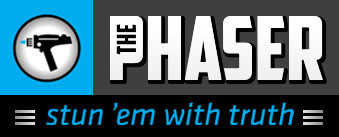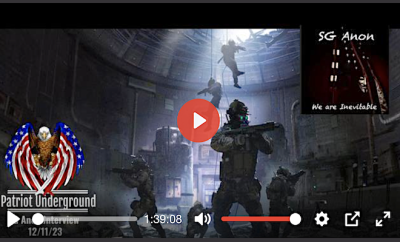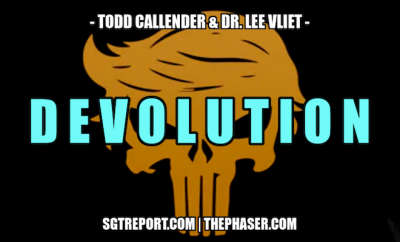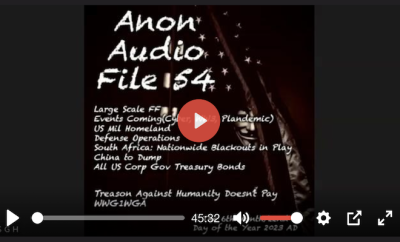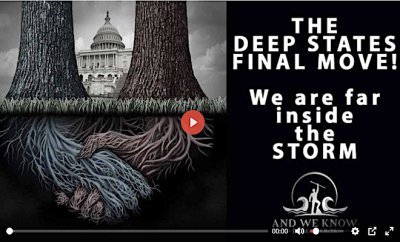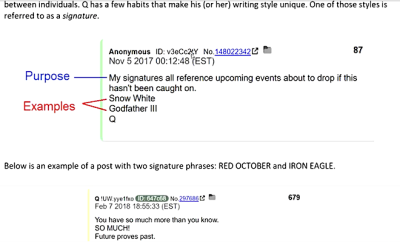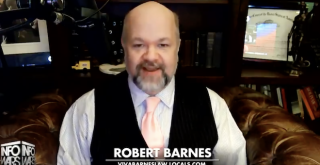 Veterans Today
Veterans Today
WW3
Re-enactment of murderous assault on Christendom’s holiest site condemned
By Stuart Littlewood, Veterans Today.com:
Play depicting 40-day military siege of the world’s oldest Christian Church “sympathises with Palestinian terrorist groups”, “glorifies extremist ideology” and is “a grotesque white-washing of the Second Intifada”, claims pro-Israel lobby
A play that re-tells one of the most shameful episodes in the continuing Israeli occupation of Palestine had its premiere this week at The Lowry in Salford, Manchester. It is called The Siege.
The Freedom Theatre company, which produced the play, had traced exiled Palestinian resisters scattered across Europe and collected their accounts of that infamous event.
An internal memo from Lowry’s management warned staff about the ‘sensitive’ nature of the performance. “As with any work relating to the Palestinian-Israeli conflict, The Siege is likely to attract comment and emotion for both sides of the debate. http://www.mancunianmatters.co.uk/content/130372886-pro-palestine-theatre-show-prompts-lowry-boss-warn-staff-over-backlash-memo
“Our decision to programme The Siege was made solely on the artistic merits of The Freedom Theatre as a company and the work itself as a performance. Whilst there will be a range of perspectives on The Siege, it is without doubt a great piece of work telling a fantastic story.”
According to the Daily Mail
http://www.dailymail.co.uk/news/article-3065771/UK-taxpayers-fund-pro-terrorist-play-15-000-public-money-given-based-words-Hamas-killers.html
British taxpayers were funding through the Arts Council a play “sympathising with Palestinian terrorist groups” and presenting an “unashamedly one-sided drama based on accounts from the gunmen and bombers of Hamas and the Al Aqsa Martyrs’ Brigade”.
The play, said the Daily Mail, tells of “a 2002 stand-off when Israeli troops cornered militants in the Church of the Nativity in Bethlehem”. The newspaper complained that, in the publicity, Hamas and Al Aqsa Brigade terrorists were merely referred to as “fighters” with no acknowledgement of their “cold-blooded murder of civilians”. Jewish leaders, said the report, raised “extreme concern” that the British taxpayer might be funding a play promoting “terrorism as legitimate”.
The Zionist Federation said: “It appears to be a grotesque white-washing of the Second Intifada, a campaign of relentless, indiscriminate murders of Israeli civilians which resulted in the deaths of thousands on both sides. Nor is it the case that these men were ‘freedom fighters’ – these attacks represented a rejection of Israel’s offer of an independent Palestinian state.
“At a time when the Middle East is being torn apart by fanatics, and the UK is trying to prevent impressionable young men and women from joining the carnage, it is highly questionable as to why a play that glorifies this same extremist ideology is being taken around the country.”
The Times of Israel reported a spokesman for the British Jewish community’s Fair Play Campaign as saying: “Given that ‘The Siege’ writers consulted terrorist killers for research, it seems likely that the play will present the story entirely from the terrorists’ point of view. It is important that audiences understand that the facts are in dispute, and presenting it as a ‘true story’ stands to mislead.”
The Church of the Nativity in Bethlehem was built by Constantine the Great and dates from AD330. It is probably the oldest Christian church in the world. I haven’t seen the play, nor am I likely to as it is not being performed anywhere near where I live. But I have been to the Church and in 2006 interviewed a survivor of the 40-day siege. His account is included in my book Radio Free Palestine.
www.radiofreepalestine.org.uk
The young man who was there throughout the siege — let’s call him George — is not a ‘fighter’, gunman or terrorist. This is his gut-wrenching story…..
The ordeal began on 1st April and was triggered by a young girl from a refugee camp. A member of her family had been killed by the IDF. Grief-stricken, she took revenge by turning herself into a suicide bomber, killing 6 or 7 Israelis in Jerusalem.
As usual, the Israelis reacted with widescale collective punishment, sending tanks and hundreds of soldiers into West Bank towns like Nablus, Jenin and Bethlehem late at night. In Bethlehem they cut the electricity supply and focused on the old town, overflying with helicopter gunships and occupying all key points around Manger Square. Many innocent Palestinians were killed by snipers, and the market and some shops were set on fire as troops hunted down suspected ‘fighters’. Civilians tried desperately to hide from the troops and someone suggested the Church of the Nativity as a sanctuary.
The door was locked so “one of the young men shot the door… there was no choice”. 248 took refuge there. They included, says George, 1 Islamic Jihad, 28 Hamas, 50 to 60 Al-Aqsa Martyrs. The remainder were ordinary townsfolk and included 100 uniformed Palestinian Authority workers; also 26 children and 8 to 10 women and girls.
“The Israeli soldiers would not allow the women and children to leave… but they left the Church the first week by the back door.” Priests and nuns – Armenian, Greek and Catholic – from the adjoining monasteries brought the number to over 300 at the beginning. “Some of them went back to the monasteries but some stayed with us
every day for the 40 days.”
On Day 3 of the siege a young man inside the Church was shot dead by a sniper as he popped his head through a hatch in the roof. That same day a second was shot by snipers as he scavenged for food in the Casa Nova guest house. His last words were: “My brothers, I love you. I don’t want to leave you. I’m still so young and I miss my wife and I want to see my daughter and son again.”
Our big problem, says George, was how to get enough food to feed so many people. “The monasteries gave us food to last about 10 days. After that we managed to bring some food in from across the fields, but when one of us was killed we stopped.”
15 days into the siege and someone said, “Let’s call an ambulance.” They had managed to recharge their cellphones using the mains that supplied the Church towers and bells. The Israelis had overlooked the fact that this was a separate supply coming from the Bethlehem municipality. So the besieged were able to phone out for help to friends in nearby Beit Sahour, who responded by sending food to the medical centre. From there it was transported by ambulance, along with authentic casualties, and delivered to houses near the Church. At night young girls carried the food in plastic bags from house to house until supplies reached the dwellings next door to the Church. The bags were then thrown from roof to roof. This went on for 6 days until one girl dropped a bag, which the soldiers found.
The IDF, now alerted, shot and paralysed another young man. It put an end to the food operation. Those trapped inside the Church were surprised to discover an old lady living within the complex. She had a small horde of olives and wheat, with which they made bread. So they managed to eke out the food for 28 days. “When it finally ran out,” George recalls, “we realised we were in big trouble.”
The Governor of Bethlehem and the Director of the Catholic Society were among those holding out in the Church. George held the key and was ordered to open the door only if someone died or was injured. He was watching through a peephole when he saw people approaching across the forecourt. They were from the Peace Movement, 28 of them. By now the world media were watching. 17 were promptly arrested but 11 took a big risk, managing to bluff their way in through the razor wire. In their rucksacks they brought food, which lasted another 4 days, and basic medicines.
The worst time was the final week – no food and only dirty water from the well. They resorted to boiling leaves and old chicken legs into a soup. George ate only lemons and salt for 5 or 6 days. Many were so ill by this time that they were passing blood.
Outside some 15 civilians had been indiscriminately shot in the street or in their homes. The IDF refused to allow the dead inside the Church to be removed for decent burial. The corpses were therefore placed in makeshift coffins, with the holes and seams sealed with candlewax, and taken down to a cellar. Meanwhile the IDF set up three huge cranes on which were mounted robotic machine guns under video control. 8 defenders were killed inside the Church, some by the robotic guns and some by snipers.
Samir, a Church caretaker and bellringer who was known to be a little disturbed, was killed in front of the Church. “He eventually went outside and tried to surrender with his hands up but was shot down by a regular sniper.”
From the start, says George, the IDF used psychological warfare methods – for example, disorienting noise to deprive them of sleep, bright lights, concussion grenades. They paraded their families in front of the Church to put pressure on them to surrender. The IDF were also using illegal dum-dum bullets which cause horrendous wounds and trauma. “Most of those who were killed… it was because of the dum-dums… so much bleeding, and it took so long to arrange to send them to a hospital.” He says the IDF fired tracer rounds into two of the monasteries and set the ancient fabric of the buildings on fire. Those trapped inside the Church vowed not to harm IDF soldiers unless they actually broke in. When soldiers did gain access and killed one of the resisters, 4 of them were shot.
“In the end, the Governor decided it was better to be in jail than die. So we opened the door and surrendered on the 40th day. 148 had survived. We were all promptly arrested and interrogated.” But when given a meal by the Israelis, 13 or 14 threw the food in the trash bin. “They were the ones who had been hurt the most,” says George. “The soldiers killed some of their families and demolished their houses…and arrested
all their families… and destroyed their lives…”
Because of the adverse publicity the CIA and EU took a hand in deciding the fate of the survivors. After 4 years the figures still sprang readily to George’s mind… “13 were exiled to the EU, 26 were exiled to Gaza, 26 were wounded, 26 had surrendered because they were under-age. 8 were killed inside the Church… and with Samir makes 9… they shot Samir in front of the Church…” It clearly upset him to remember.
“The rest were allowed home.” George had scavenged under sniper fire. Luckily he was among those sent home. “The Israelis said to me, ‘Do you know why you are going home? Because America wants it’.”
When the survivors apologised to the Church fathers for the damage done, they replied: “God will look after the Church. We are much more concerned about looking after you.” I put it to George that by telling me the story he might find himself in the Israelis’ black books. “I’m already in their black book,” he replied.
Imagine how the story might have ended if the world hadn’t been watching. It deserves to be told and re-told for ever. I hope the Freedom Theatre puts it out on DVD so that all can see.
I’m assuming, of course, that the play reflects George’s version of events. Judge for yourselves who the real terrorists are.
